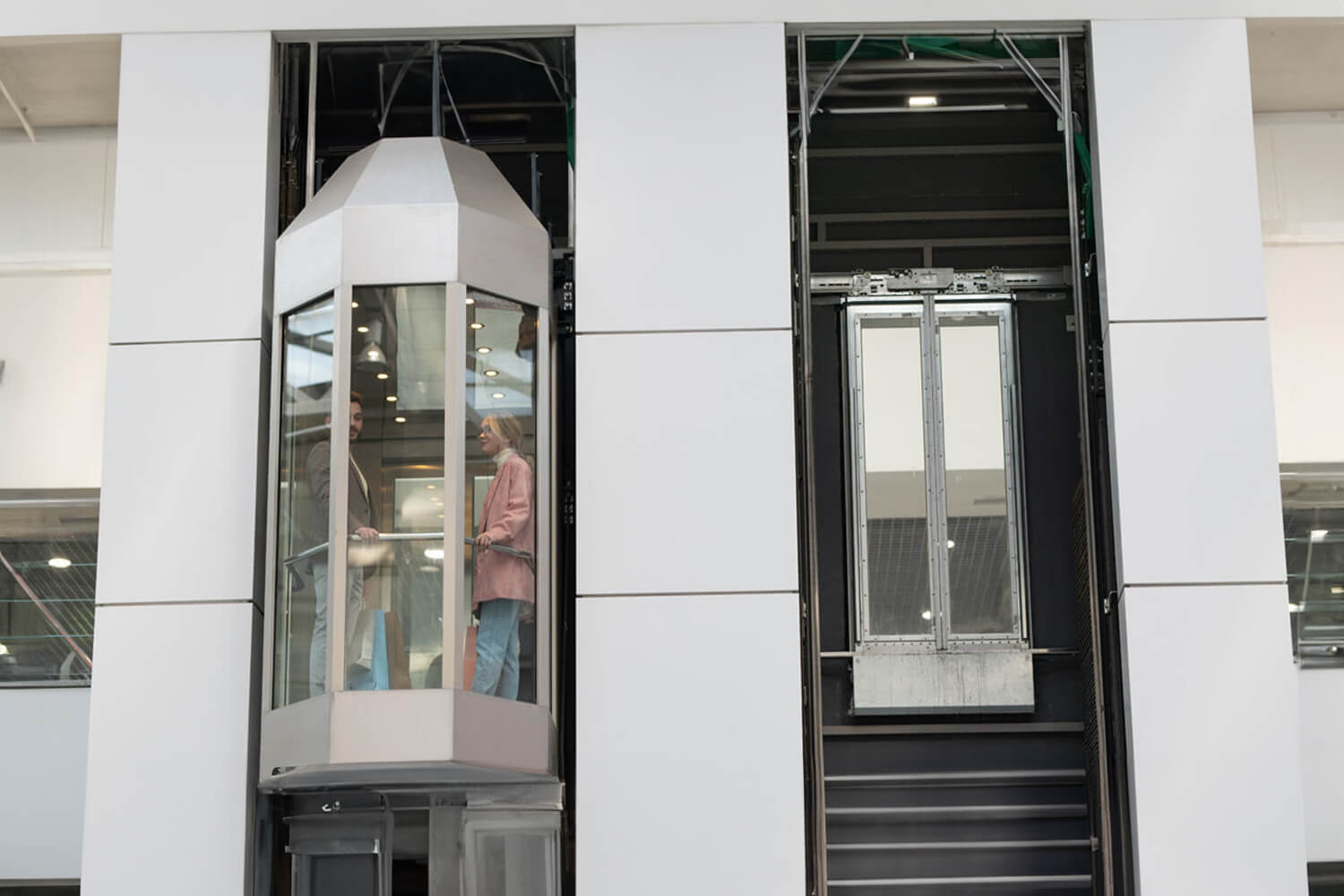What is a traction elevator? You might ask this if you haven’t yet installed an elevator in your building or climbed up to see one behind the scenes. There are multiple types of elevators out there, from traction or hydraulic elevators to vacuum and freight elevators.
Still, even though each type differs in function and where you’ll find them, the question is not so much about performance as it is about safety. ELEVATE Monitoring’s advanced elevator monitoring system options make all types of elevators safer and code-compliant.
Here’s everything you need to know about traction elevators and how to make them safer.
More About Traction Elevators
A traction elevator is motor-driven and uses a system of pulleys and steel ropes to move the elevator cab up or down. Traction elevators are energy efficient, which is why they’re often in high-rise buildings.
In terms of mechanics, traction elevators rely on a motorized system. This works quite differently to the pistons used inside hydraulic elevators. With a motorized pulley design, one of the biggest advantages is that passengers enjoy more precise movement between floors.
How Do Traction Elevators Work?
Typically, traction elevators contain elevator sheaves inside the elevator shaft which control the entire operation. These elevator sheaves act as pulleys, holding the elevator cables. That way, they control the system’s lifting motions and traction.
An electric motor drives the sheaves, which connect all of the belts. As the electric motor rotates the sheaves, the cables move the elevator upward or downward. A counterweight rotation design keeps the elevator balanced while reducing the required power–it’s a fairly efficient system.
The Traction Elevator’s Most Notable Benefits
What is a traction elevator? Now that you have an idea of how traction elevators work, you may be asking what the benefits are beyond energy efficiency.
Here are a few reasons so many buildings choose this elevator type:
- Speed: Traction elevators are the fastest type, making them ideal for tall buildings.
- Capacity: The reinforced design allows traction elevators to safely support more weight.
- Space: Traction elevator setups take up less space than other types.
- Reliability: With their efficient mechanisms, smoother operation, and robust support, traction elevators tend to last longer.
The Disadvantages of Installing a Traction Elevator
While traction elevators may be fast, energy-efficient, and highly capable, the main drawbacks include the following:
- More expensive to install and maintain.
- Louder operation at high speeds.
- Heavy requirements to meet the ASME Elevator Code.
Despite these considerations, traction is still the most common type of elevator you’ll find in any modern installation.
Best Traction Elevator Applications
Why are traction elevators a top choice for mid-to-high-rise buildings? They’re fast, reliable, and energy-efficient, carry heavy loads, and move smoothly.
That’s why you’ll find traction elevators in:
- Hotels.
- Apartment complexes.
- Office buildings.
- High-rise industrial buildings.
- Condos.
- And more.
Installing a Traction Elevator? Stay Up-to-Code With Our Elevator Monitoring System
What is a traction elevator? Whether you have Schindler, Johnson, or TK Elevator in traction models or other types of elevators, you’ll want an advanced, up-to-code video monitoring system! Get your around-the-clock monitoring team and keep people safe in your elevator–call ELEVATE Monitoring today at 877-990-9191!


